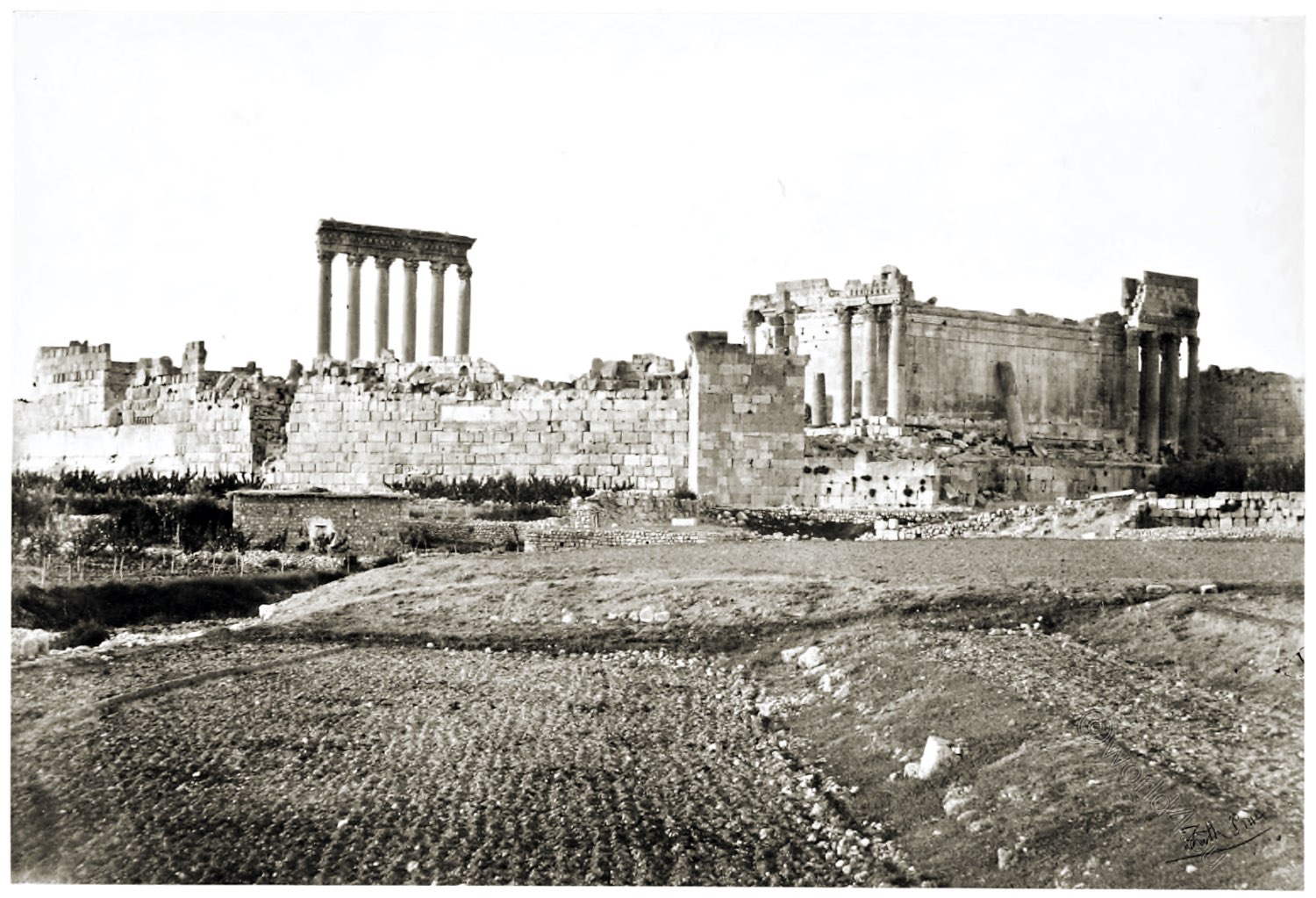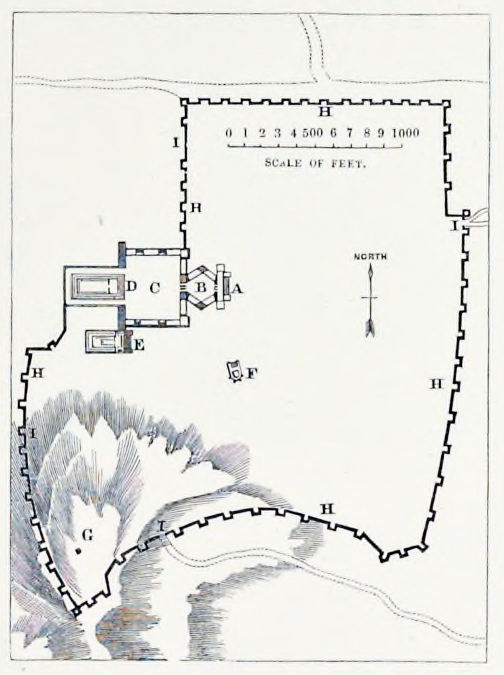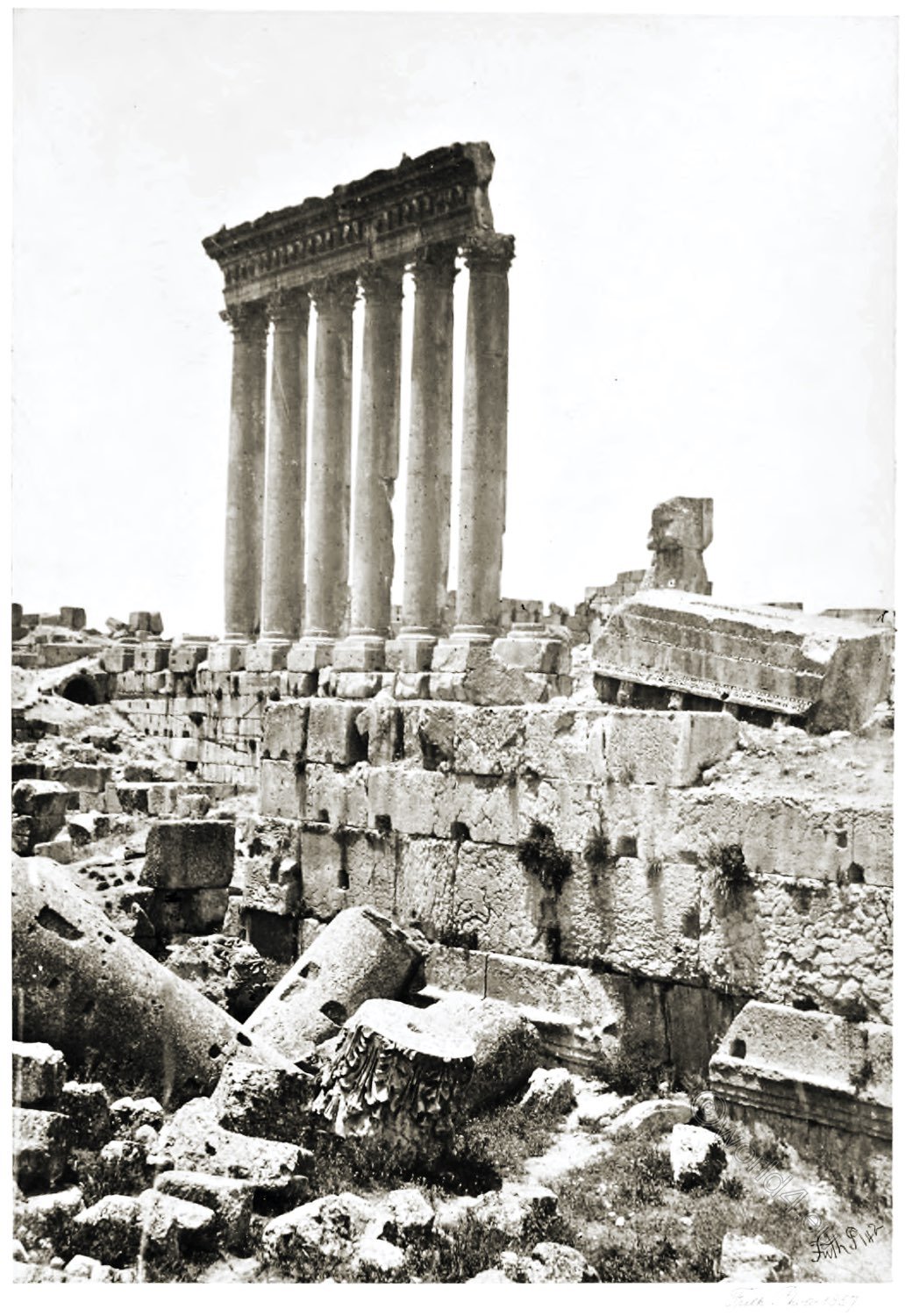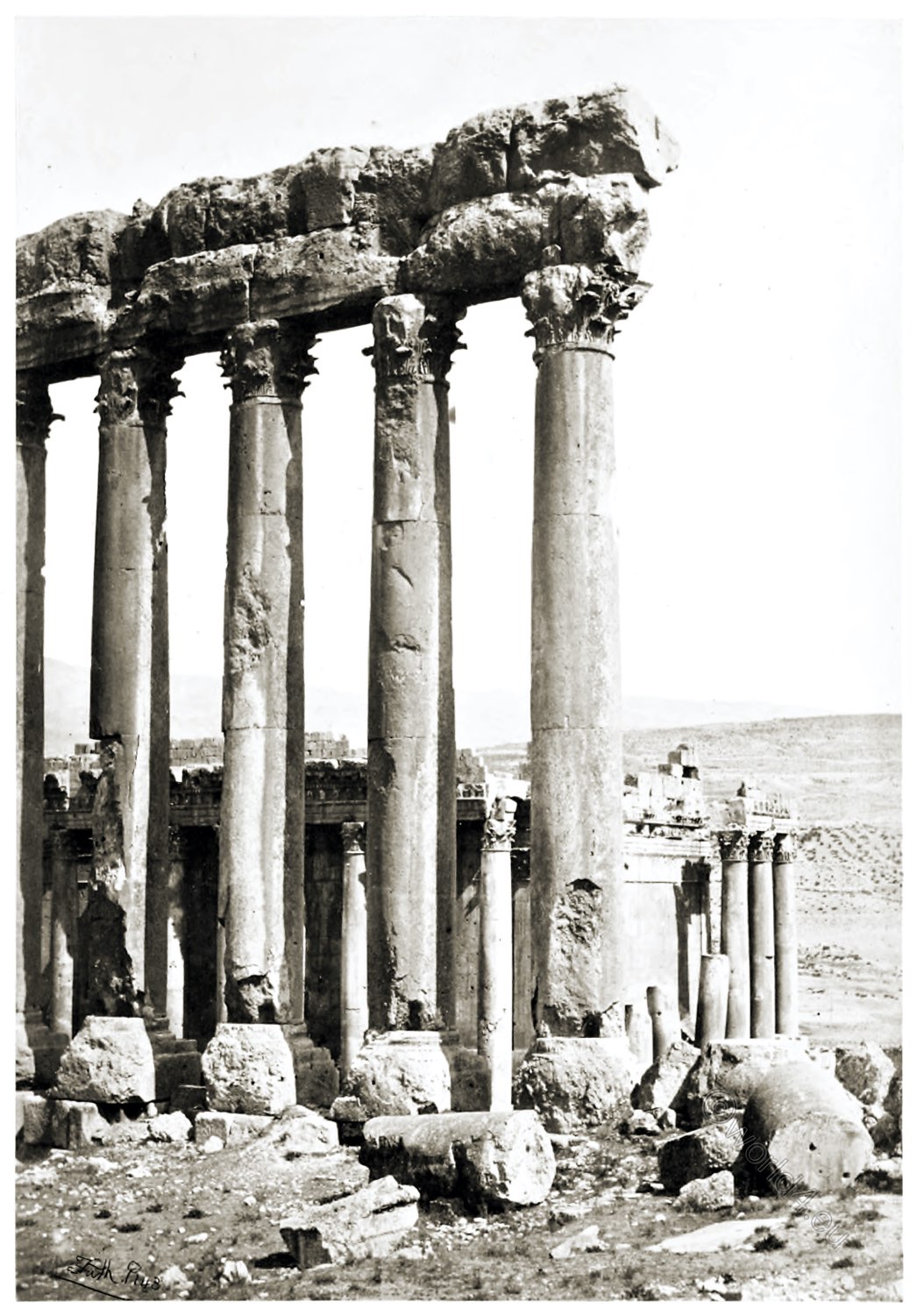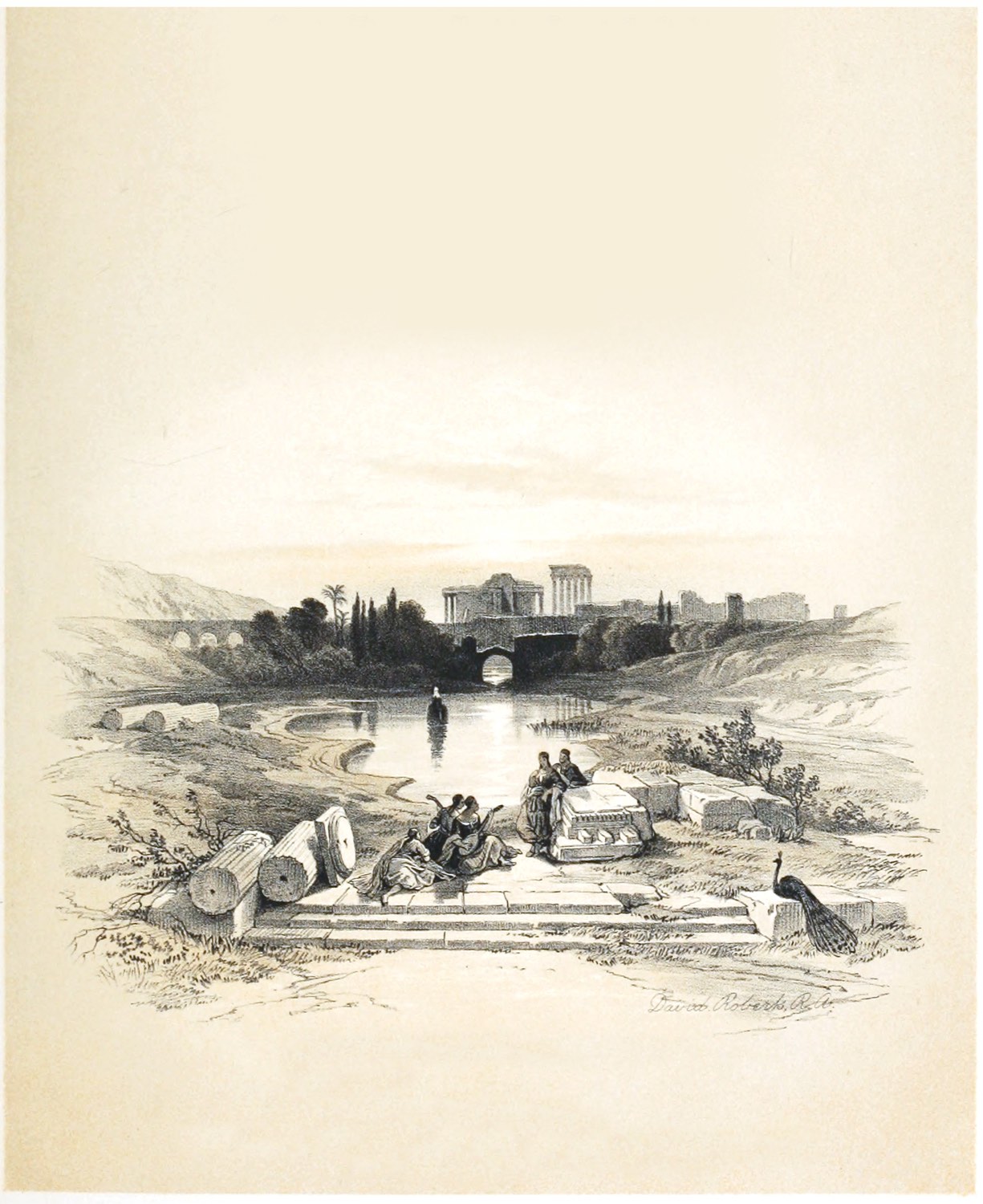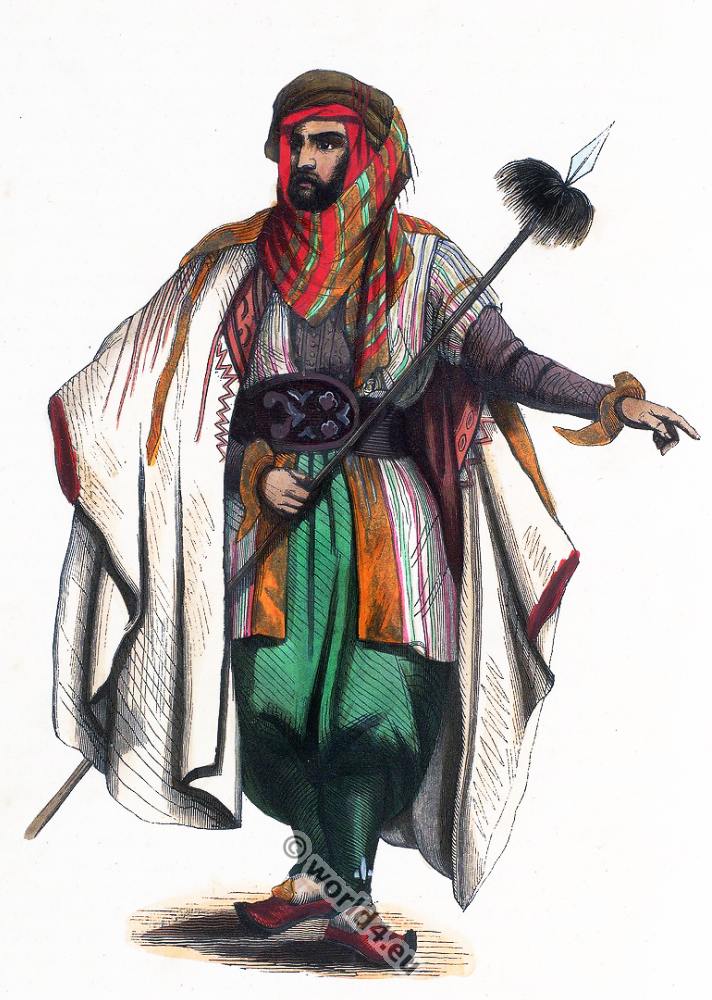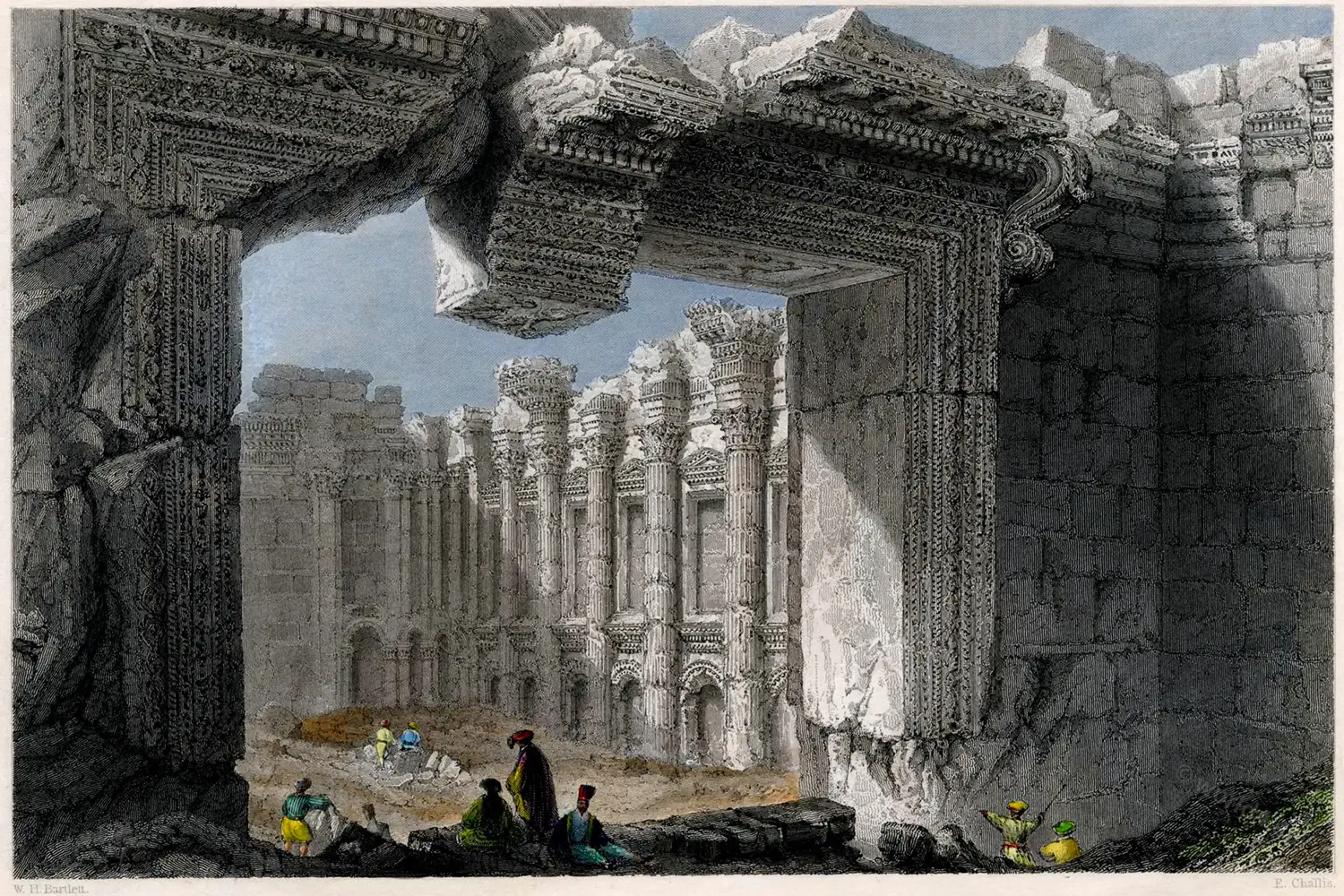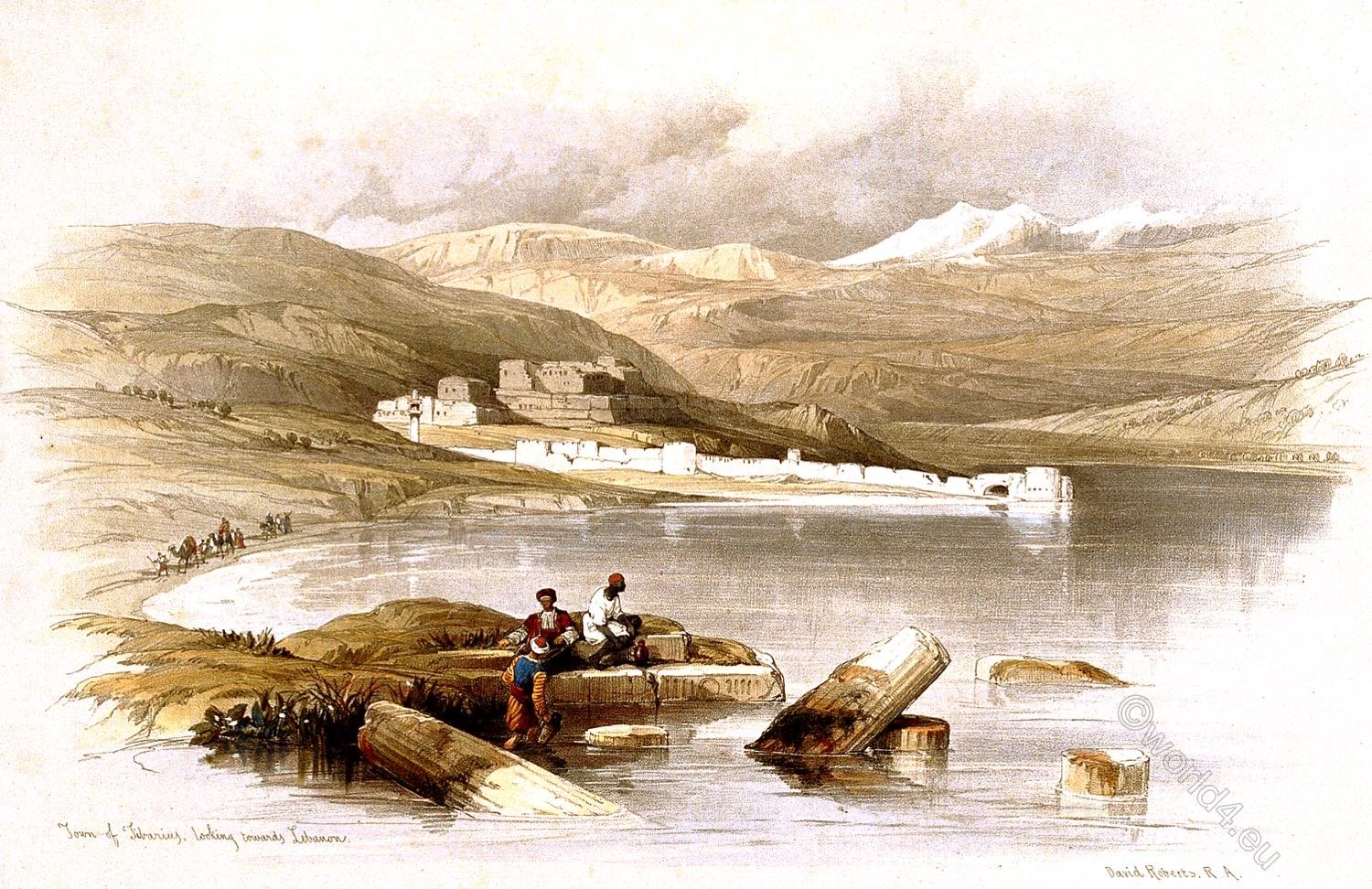Contents:
DISTANT VIEW OF THE SIX COLUMNS OF THE GREAT TEMPLE.
THE GREAT COLUMNS AND SMALLER TEMPLE.
GENERAL VIEW FROM THE SOUTH.
IN order to enable our readers to judge of the points from which our views of Baalbek have been taken, we have engraved a plan of the ancient city and of the temples, compiled principally after the careful surveys of Wood and Dawkins. It has been conjectured that the entire plan of the temples of Baalbek was not carried out; and that it was contemplated to erect another building on the northern side of the Great Temple, corresponding with the smaller structure.
A. The Flight of Steps, and the Portico, which is 260 feet long. It had 12 columns, which were, with the pedestals, 57 feet high.
B. Hexagonal Court, or Forum, 190 feet long, by 266 wide.
C. Quadrangular Court, 405 feet long, by 440 wide.
D. Great Temple, 290 feet long, by 160 wide. (The six columns shown in the view belonged to this temple.)
E. The smaller Temple, 225 feet long, by 118 wide. (This is the building in the photograph, against which the fallen column rests.)
F. The circular Temple, of which we shall give a view in a subsequent Part. It is 32 feet in diameter.
G. A Doric column.
H H. The City Walls, about 4 miles in circuit.
I. The City Gates.
On the left of our picture, in the basement of the Great Temple, and at a height of some thirty or forty feet from the ground, are seen the three great stones which have excited the wonder of all traxvellers. They have suffered innumerable measurements, which have resulted in fixing their dimensions, together 190 feet 8 inches in length; separately, 63 feet 8 inches 64 feet and 63 feet.
The general scale of the buildings, and the distance from which my view has been taken, will be best appreciated by comparing these measurements with the stones referred to in the picture. Besides these, Dr. Wilson says that at the north-west corner are nine stones, which average 31 feet in length, 9 feet 7 inches in breadth, and 13 feet in depth ; and one in the western wall, 69 feet in length, 13 in depth, and 18 feet in breadth, containing 16,146 cubic feet of stone. This measurement gives the enormous weight of 1240 tons for this one stone; and supposing it to be broken up suitable for road-making, there would be sufficient to load tour such vessels as are employed in bringing coals from the north to London, or to fill a string of one-horse carts that would extend nearly five miles in length.
DISTANT VIEW OF THE SIX COLUMNS OF THE GREAT TEMPLE.
THE word Baalbek — in the Syrian language “The City of Baal, or the Sun” — was translated by the Greeks into Heliopolis, by which it was known until, in modern times, it recovered its original Syriae name.
Baalbek has no authentic history. There can be no doubt that, from a very remote period, it was the seat of the worship of Baal, and thus would in all probability possess a massive and magnificent temple.
It is probable that the “Baal-gad,” mentioned in the book of Joshua (xi. 17), is identical with Baalbek. Speculations respecting the builders of the later temples have been numerous and conflicting. I have little hesitation in attributing the buildings, of which the existing ruins are the remains, to the Romans; and I account for the enormous size of some of the stones of the substructures, as I believe most recent travellers have done, by the supposition that they formed parts of the earlier temples.
The only historical authority for the building of the temples of Baalbek is that of John of Malala, from whom we learn that Elius Antoninus Pius built a great temple to Jupiter at Heliopolis, in Phoenicia, which was one of the wonders of the world: but Julius Capitolinus, who wrote the life of the emperor, does not mention the Temple of Heliopolis.
Wood and Dawkins, who appear to have searched carefully for early records of Baalbek, argue that, since no mention is made of its temples by any Greek authors, from the period of Alexander’s conquest until the time of Pompey, they cannot therefore be of Greek origin; all the known Grecian structures, although much inferior, being spoken of, or greatly lauded.
Macrobius says that in the city called Heliopolis the Assyrians worshipped the sun with great pomp, under the name of Heliopolitan Jove, and that the statue of their god was brought from a city in Egypt, also called Heliopolis; and he proceeds to show that this statue represented both Jupiter and Baal. It was of gold, and held in its right hand a whip, and in its left a thunderbolt, together with ears of corn. Baalbek was celebrated as a place of divination: Trajan consulted its oracle upon the success of his Parthian expedition.
From the reverses of several Roman coins, it is probable that Heliopolis was constituted a colony by Julius Caesar; and upon coins of Septimus Severus we find its temple, having, like it, ten columns in front, with the legend— “Col. Hel. Romae. Colonia Heliopolitana Jovi optimo Maximo Heliopolitano.” Constantine is said by Abulfaragius to have built a temple here; but whilst he only closed the Pagan temples, Theodosius destroyed some, and converted the great and famous temple of Jupiter into a Christian church.
Oriental writers describe Baalbek as a place of great wealth and importance up to the time of the invasion of the Moslems; indeed, when, after a courageous defence, it capitulated to them, the ransom exacted by the conquerors is said to have been 2000 ounces of gold, 4000 ounces of silver, 2000 silk vests, and 1000 swords, together with the arms of the garrison. In a.d. 748 it was sacked, and the principal inhabitants put to the sword by the Caliph of Damascus; and it appears never to have recovered from this blow, but, on the contrary, to be gradually sinking into utter oblivion. Its inhabitants, who in 1751 are said to have been 5000, do not now, in all probability, exceed 1000 in number.
THE GREAT COLUMNS AND SMALLER TEMPLE, BAALBEK.
DR. ROBINSON prefaces his description of the Temples of Baalbek with the following passage (“Biblical Researches,” vol. iii., p. 507), which is so remarkably appropriate to the subject of my picture, that I quote it entire: “The temples, the ruins of which now constitute the wonderful attractions of Baalbek, are two in number the greater and the lesser. The former, with its magnificent peristyle and its vast courts and portico, extended 1000 feet in length from east to west. It stands upon an artificial vaulted platform, elevated from 20 to 30 feet above the adjacent country. Besides the dilapidated ruins of the courts and portico, there now remain only the six south-western columns of the lofty peristyle; and these are still the crowning glory of the place. The lesser temple stands likewise upon its own similar, though less elevated platform.
It is on the south of the greater temple is; parallel with it; and its front is a few feet east of the eastern corner of the great peristyle. It had no court; and its length is less than one-third part of that of the greater temple, with its courts. It was finished, and that most elaborately, and the larger portion of it still remains while not improbably the larger; temple was never completed.” And in the present day, as Dr. Robinson afterwards states, “in respect to the general plan, it must everywhere be borne in mind that many parts, and especially the south side, have been greatly disfigured and obscured by the Saracenic erections of the middle ages, when the whole area of both temples was converted into a Moslem fortress.”
The area of the great temple, to which the columns in the foreground of my picture belonged, is raised, as before stated, considerably above that of the smaller structure, upon arches covering a vast extent of vaulted chambers, which are still accessible, but contain nothing worthy of remark. The building was 290 feet long, and 160 wide. It had ten columns in front, and nineteen on each side, and was, from the ground to the top of the pediment, 120 feet high.
It appears that a certain Trevet, in 1550, saw twenty-seven columns of the great temple: subsequent travellers mention but nine and Volney, in 1785, saw only six; standing—the present number. They are 71 feet 6 inches high, and the entablature—portions of which lie scattered around, beautifully sculptured—was 11 feet 9 inches high. Each shaft, it will be seen, consists of three pieces, joined without cement, but by means of an iron bar let vertically into each piece effectual is this means, that a column of the smaller temple has fallen against the outer wall with such violence as to beat in the stone against which it fell, yet the joining of the shaft have not been in the least degree opened by the shock. Some of the standing columns are considerably mutilated by violent attempts to get at these bars of metal.
I have before stated that I am not versed in architectural nomenclature but I conclude with the; following edifying description of the smaller temple, from a popular article upon “Baalbek” in the Penny Cyclopedia —“ The building is peripteral, the columns are pyenostyle, and the portico is dipteral, with a pseudo-nitercloumniation before the antae of the pronaos!
Source: Egypt and Palestine by Francis Frith (English, 1822-1898). Publisher: London, James S. Virtue, City Road and Ivy Lane. New York: 26, John Street. Publication date: 1858.


